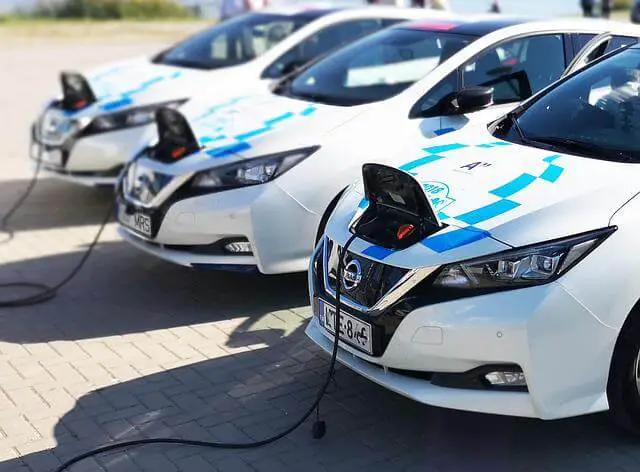Last Updated on May 30, 2023 by Rose Morah
The following Nissan Leaf tips will help you enjoy owning a Leaf:
1. Expect a temporary range loss during winter
The Nissan leaf range will drop because its battery tends to drain faster during winter.
One of the main reasons for the faster drain is the heating of the cabin to help you stay warm. This reduces the Leaf’s range because the power to heat the cabin is being drawn from the high voltage battery.
Another reason is the physical and chemical reactions in the battery which tend to be slower in cold temperatures. This explains why the Nissan Leaf battery tends to hold a smaller amount of charge when it is cold/winter.
Recommendations
- If you have heated seats and a heated steering wheel, it would be better to turn them on in winter than to heat the whole cabin.
This is because heating the whole cabin will use more energy from the battery compared to just heating the seats and wheels.
- Before leaving, you can set the climate control to heat the cabin while the car is still charging. This is to make sure that it does not use the energy from your battery to heat the cabin when driving.
See the Best Tires For Nissan Leaf.
2. Use Leaf Spy to track information about your Nissan Leaf
Leaf Spy gives you important information about your Nissan Leaf’s battery health, the actual temperature of the battery, how much energy your car accessories are consuming and so much more.
The information provided by the Leaf Spy app is important to every Nissan Leaf owner.
For example, knowing your battery’s health will help you figure out how soon you will need a battery replacement. Additionally, knowing the battery’s temperature is important, especially if you want to fast charge and e.t.c.
Check out a more detailed article on How To Use Leaf Spy Lite and Pro on Nissan Leaf (Complete Guide).
See also: How To Check Nissan Leaf Battery Health (Battery Degradation Status).
3. Charging will slow down once you hit 80% SoC
When charging your Nissan Leaf, perhaps it’s important to know that charging will slow down drastically once you hit 80% SoC.
This means that getting to 100% will take longer and may be a waste of time, especially if you are charging at public chargers and during road trips.
Read more about Nissan Leaf Charging (Best Charging Tips and Tricks).
See also:
Nissan Leaf BMS Update (And Common FAQs).
Best Charging Apps For Nissan Leaf.
4. Avoid charging DC rapid charging speeds many times a day
Nissan Leaf does not have active thermal management for the battery pack (no liquid cooling). Therefore, if the battery’s temperature is high you will get a slower charging rate in order to protect the battery.
This means that if you plan on taking a road trip on a Nissan Leaf, charging it through DC rapid charging speeds throughout the trip in a single day will completely slow down your trip.
However, you should expect to get a decent charging speed on your first charging stop on the DC rapid charger. But a very slow charge rate on the 2nd and 3rd charging stops, especially if you are charging it under hot weather.
| NOTE: Always aim to charge just enough to get you to the next charging station. |
You may also like Nissan Leaf Model Comparison.
Best Nissan Leaf Model Year (And the Years To Avoid).
See also Nissan Leaf Winter Performance & Range.
5. Avoid charging your Nissan Leaf when the battery is hot
It is recommended that you always allow your battery to cool down after driving before you charge it.
For instance, if you have just arrived home from work or after a long drive, give it time to cool down before you plug in the charger.




